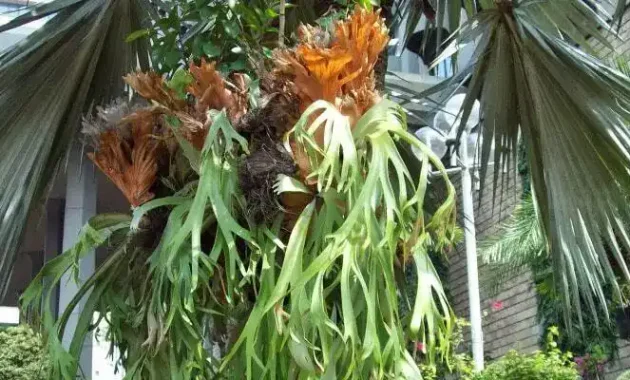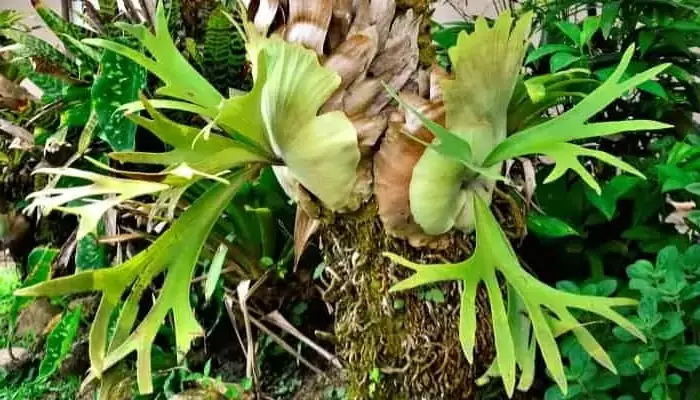Elkhorn fern, a popular tropical plant with antler-like fronds, is known for its unique and elegant appearance. Native to Southeast Asia, Australia, and Africa, this plant can thrive in various environments with proper care.
This comprehensive guide will provide detailed information on how to care for Elkhorn Fern, including lighting and watering requirements, soil and fertilizer needs, common pests and diseases to watch out for, and propagation tips.
Elkhorn fern requires bright, indirect sunlight for a specific duration each day and should be protected from overexposure to direct sunlight. Proper watering, misting, and maintaining humidity levels are crucial for its well-being. It thrives in temperatures between 60°F and 80°F and prefers well-draining soil with a specific pH range. Occasional feeding with a balanced fertilizer during the growing season is recommended.
This guide will also cover important information on pests and diseases that may affect the plant and provide guidance on propagating Elkhorn Fern through spores or offsets.
Overall, this article will serve as a valuable resource for those seeking to care for and cultivate the exquisite Elkhorn Fern.
Key Takeaways
- Elkhorn Fern is a popular indoor plant with antler-like fronds native to tropical regions.
- It requires bright, indirect sunlight, specific watering schedules, and high humidity levels.
- The plant should be mounted on materials like sphagnum moss or coconut fiber.
- It can be propagated through spores or offsets and requires occasional pruning and pest prevention.
How to Care for Elkhorn Ferns
The care of Elkhorn Fern involves providing the plant with the right lighting conditions, watering it appropriately, maintaining optimal humidity levels, using well-draining soil, feeding it with a balanced fertilizer, preventing pests and diseases, and considering suitable mounting materials.
When it comes to lighting, Elkhorn Fern requires bright, indirect sunlight for 4-6 hours per day. Direct sunlight can scorch the leaves, while too little light can damage the plant.
Watering should be done once a week during the growing season and once every two weeks during the dormant season. Overwatering can lead to root rot, while underwatering can cause dehydration.
Regular misting can help increase humidity levels, which should range from 60% to 80%.
Well-draining soil with a pH level between 5.5 and 6.5 is essential for the plant’s healthy growth.
Feeding with a balanced, water-soluble fertilizer during the growing season can provide additional nutrients.
Pests such as mealybugs and scale insects can be treated with rubbing alcohol, while diseases like root rot and leaf spot can be avoided by avoiding overwatering or high humidity.
Suitable mounting materials for Elkhorn Fern include sphagnum moss, coconut fiber, and tree fern fiber.
By following these care tips, Elkhorn Fern can thrive and add a touch of tropical elegance to any space.

Lighting and Watering
Bright, indirect sunlight for 4-6 hours per day is recommended for optimal growth and health of the Elkhorn Fern. Here are some important factors to consider regarding lighting and watering for this tropical plant:
- Best indoor locations for Staghorn Fern:
- North or east-facing windows provide the ideal lighting conditions.
- Avoid placing the plant in direct sunlight, as it can scorch the leaves.
- Too much or too little light can damage the plant, so finding the right balance is crucial.
- Tips for maintaining proper humidity levels for Elkhorn Fern:
- Elkhorn Fern thrives in high humidity levels ranging from 60% to 80%.
- Regular misting can help increase humidity around the plant.
- Placing a tray of water near the plant or using a humidifier can also help maintain the desired humidity levels.
- Avoid placing the plant near heating or cooling vents as they can decrease humidity levels.
Soil and Fertilizer
Well-draining soil with the right pH level and organic matter is essential for optimal growth and health of the Elkhorn Fern. The Elkhorn Fern benefits from well-draining soil as it helps prevent root rot, a common issue with this plant. Organic matter in the soil provides important nutrients and promotes healthy root development.
The pH level of the soil should be between 5.5 and 6.5, which is slightly acidic, as it allows the plant to absorb nutrients effectively. When choosing a fertilizer for the Elkhorn Fern, it is important to select a balanced, water-soluble option. This type of fertilizer provides essential nutrients such as nitrogen, phosphorus, and potassium, which are necessary for the plant’s growth and overall health.
Regular feeding with a balanced fertilizer during the growing season can help promote lush frond growth and vibrant foliage.

Common Pests and Diseases
Pests and diseases can pose a threat to the health and vitality of the Elkhorn Fern. Common pests that may affect this plant include mealybugs and scale insects. These pests can be treated by using rubbing alcohol to remove them from the fronds. Additionally, keeping the plant clean and debris-free can help prevent infestations.
When it comes to diseases, Elkhorn Fern is susceptible to root rot and leaf spot. These diseases are often caused by overwatering or high humidity levels. To prevent them, it is important to ensure proper drainage and avoid excessive watering. Natural pest control methods, such as using neem oil, can also be used to combat pests and maintain the health of the Staghorn Fern.
It is crucial to monitor the plant closely for any signs of pests or diseases and take appropriate action to mitigate their impact.
Propagation Tips
Propagation of the Elkhorn Fern can be achieved through various methods, such as division or spores. Here are some propagation techniques and best practices for successful propagation:
- Division: To propagate the Elkhorn Fern through division, carefully remove the plant from its pot and gently separate the offsets or pups from the main plant. Ensure that each offset has roots attached. Plant the offsets in separate pots with well-draining soil and provide the same care as mature plants.
- Spores: Elkhorn Ferns produce spores on the underside of their fronds. To propagate using spores, collect mature fronds with visible spores and place them in a plastic bag. Let the fronds dry out for a few days, then shake the bag to release the spores. Sprinkle the spores onto a tray of moist, sterile potting mix and cover with a plastic dome to create a humid environment. Keep the tray in a warm, well-lit area and mist regularly. Once the spores germinate, transfer the young ferns to individual pots.
- Best Practices: Regardless of the propagation method used, it is important to provide the right conditions for successful growth. Maintain a warm and humid environment, provide bright but indirect light, and ensure proper watering. Regularly mist the young plants to maintain humidity levels. Monitor the plants for signs of root rot or pests and take appropriate measures to address any issues.
With proper care and attention, Elkhorn Ferns can be easily propagated and enjoyed in multiple areas of your home or garden.
Frequently Asked Questions
Can I keep my Elkhorn Fern outdoors all year round?
Elkhorn ferns can be kept outdoors year-round in tropical regions with temperatures between 60°F and 80°F. They require proper outdoor care, including bright, indirect sunlight, well-draining soil, and protection from extreme temperatures.
How do I know if my Elkhorn Fern is getting too much or too little light?
Signs of Elkhorn fern light problems can include scorched leaves from too much direct sunlight or pale, weak growth from insufficient light. To adjust light for a staghorn fern, place it in a bright, indirect light area for 4-6 hours daily.
Can I use regular potting soil for my Elkhorn Fern?
Regular potting soil may not be suitable for Elkhorn Fern. It requires well-draining soil with a pH level between 5.5 and 6.5. Alternative potting materials like sphagnum moss, coconut fiber, or tree fern fiber are recommended. Proper watering techniques involve once-a-week watering during the growing season and every two weeks during the dormant season to prevent root rot or dehydration.
What are some natural remedies for pest control on Elkhorn Fern?
Some natural remedies for pest control on Elkhorn Fern include homemade insect repellents such as neem oil, which can be effective against pests like mealybugs and scale insects. Regularly cleaning the plant and keeping it debris-free can also help prevent infestations.
How long does it take for a Elkhorn Fern spore to grow into a mature plant?
The growth timeline of a Elkhorn Fern from spore to a mature plant can vary, but under optimal conditions, it typically takes several years. Factors such as light, temperature, humidity, and proper care play a crucial role in its growth and development.













Comments are closed.